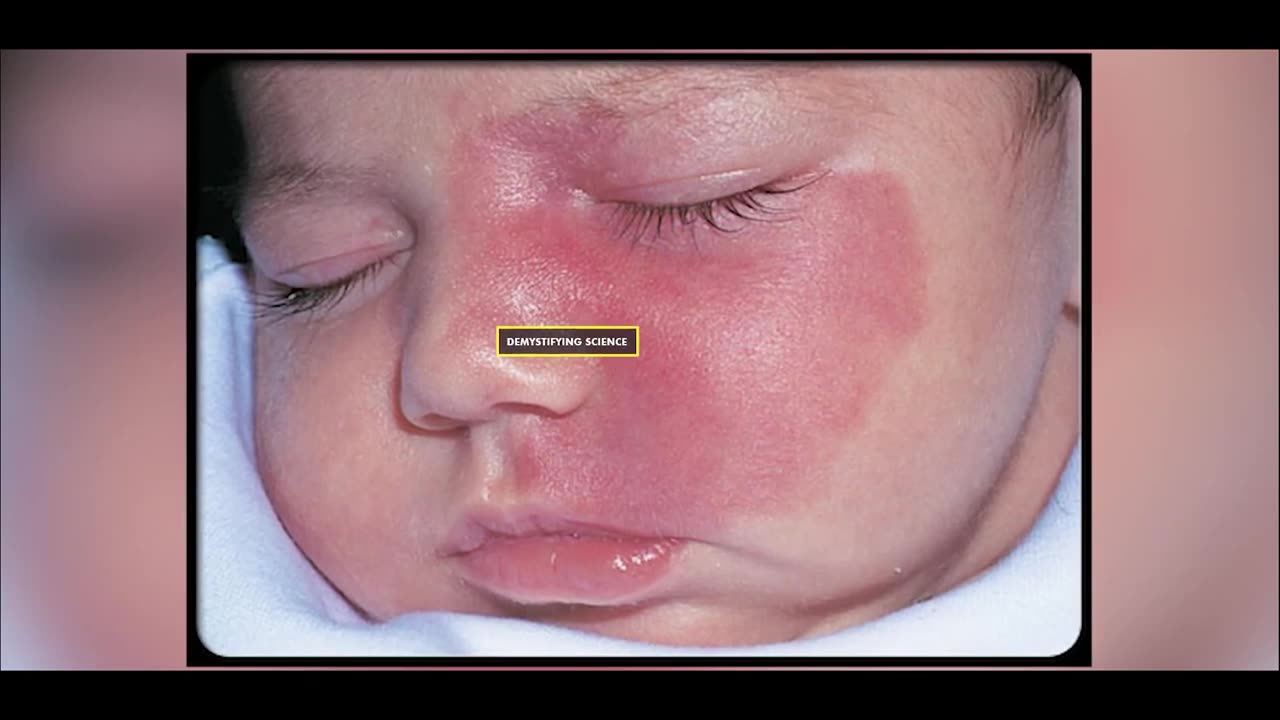Premium Only Content

Birthmarks: Understanding the Types, Causes, and Treatment Options
#skinpigmentation #birthmark #melanin
Birthmarks are unique marks that appear on our skin at birth or a few weeks after birth. They can vary in color, size, and shape and are often found on the face, neck, head, etc. Some birthmarks, like moles, fade over time, while others slowly progress and remain on our skin for life.
Causes of Birthmarks
The exact cause of birthmarks remains unknown, but understanding the types of birthmarks, including pigmented and vascular birthmarks, can help identify how they are formed.
Pigmented Birthmarks
Pigmented birthmarks result from an increase or decrease in the pigments that color our skin. Melanocyte cells in our skin produce a pigment called melanin, which gives color to the skin. If melanin production is disturbed for some reason, the affected area's skin color differs from the rest, called a pigmented birthmark.
Notable causes of pigmented birthmarks include:
- Accumulation of melanocytes in the skin.
- Abnormal production of melanin pigment due to genetic mutation.
- Trapping of melanocytes in the dermis layer.
If an unknown reason causes more melanocytes in a skin area, it leads to increased melanin production, changing the skin color.
If mutations occur in melanocytes' DNA, the melanin production in the affected area might increase or decrease, causing the skin color to become light or dark brown, leading to a birthmark appearance.
Similarly, mutations in melanocytes during fetal development can prevent them from reaching the epidermis layer and trap them in the dermis layer, changing the affected areas' skin color and forming a birthmark.
Vascular Birthmarks
Vascular birthmarks are formed due to abnormalities in our blood vessels, such as Hemangiomas, salmon patches, and port wine stains.
Hemangiomas:
These birthmarks result from the abnormal development of arteries in our skin surface. Hemangiomas turn the skin red. Some scientists believe that proteins produced during placental growth make the skin's blood vessels abnormal, leading to hemangiomas.
Salmon Patches:
In some cases, small abnormal capillaries accumulate on the skin surface, turning the affected area red or pink. These birthmarks are called salmon patches.
Port Wine Stains:
Specific chemical signals in our blood control blood flow. Mutations in the genes of these chemicals can make the skin's blood flow abnormal, turning the skin red, leading to a birthmark known as a port wine stain.
Treatment
Pigmented Birthmarks:
Usually, pigmented birthmarks fade over time, but in some cases, surgery may be required to remove them, such as giant moles.
Vascular Birthmarks:
Various methods treat vascular birthmarks, including cosmetic solutions like makeup, medicines, laser treatments, and surgery.
Conclusion
Birthmarks, though harmless, are a fascinating aspect of human biology. While the exact causes remain unknown, advancements in medicine provide insights and various treatment options for those who seek to understand or manage these distinctive skin features.
#birthmarks #birthmark #skinpigmentation #melanin
-
 11:18
11:18
Dr Disrespect
2 days agoDr Disrespect: THE BEST AND WORST OF GAMESCOM 2025
120K20 -
 2:10:12
2:10:12
Badlands Media
1 day agoDevolution Power Hour Ep. 383: Epstein, Durham, and the Dictator Narrative
91.1K65 -
 2:40:10
2:40:10
DLDAfterDark
10 hours ago $0.43 earnedDLD Live! Feat. Red Dawn Readiness! Glock FRT's - Striker Fire Safety Concerns - ACE Trigger
34.1K5 -
 2:40:21
2:40:21
BlackDiamondGunsandGear
9 hours agoAre ALL Striker Fired Pistols UNSAFE? // After Hours Armory
49.5K12 -
 6:34:50
6:34:50
SpartakusLIVE
13 hours ago#1 Saturday Spartoons on RUMBLE PREMIUM
121K7 -
 1:04:59
1:04:59
Man in America
14 hours ago“Summoning the Demon” — The AI Agenda Is FAR WORSE Than We Know w/ Kay Rubacek
57.4K45 -
 2:16:48
2:16:48
Tundra Tactical
12 hours ago $0.13 earned🎯💥 The World’s Okayest Gun Show 🔫😂 | LIVE Tonight on Rumble!
39.6K1 -
 3:36:03
3:36:03
Mally_Mouse
1 day ago🌶️ 🥵Spicy BITE Saturday!! 🥵🌶️- Let's Play: Tower Unite!
63.5K2 -
 58:59
58:59
MattMorseTV
12 hours ago $1.70 earned🔴Trump just BROKE Newsom.🔴
82.6K94 -
 18:14
18:14
Her Patriot Voice
12 hours agoWho Is WORSE for NYC: Trump Girl or Socialist?
61.9K35